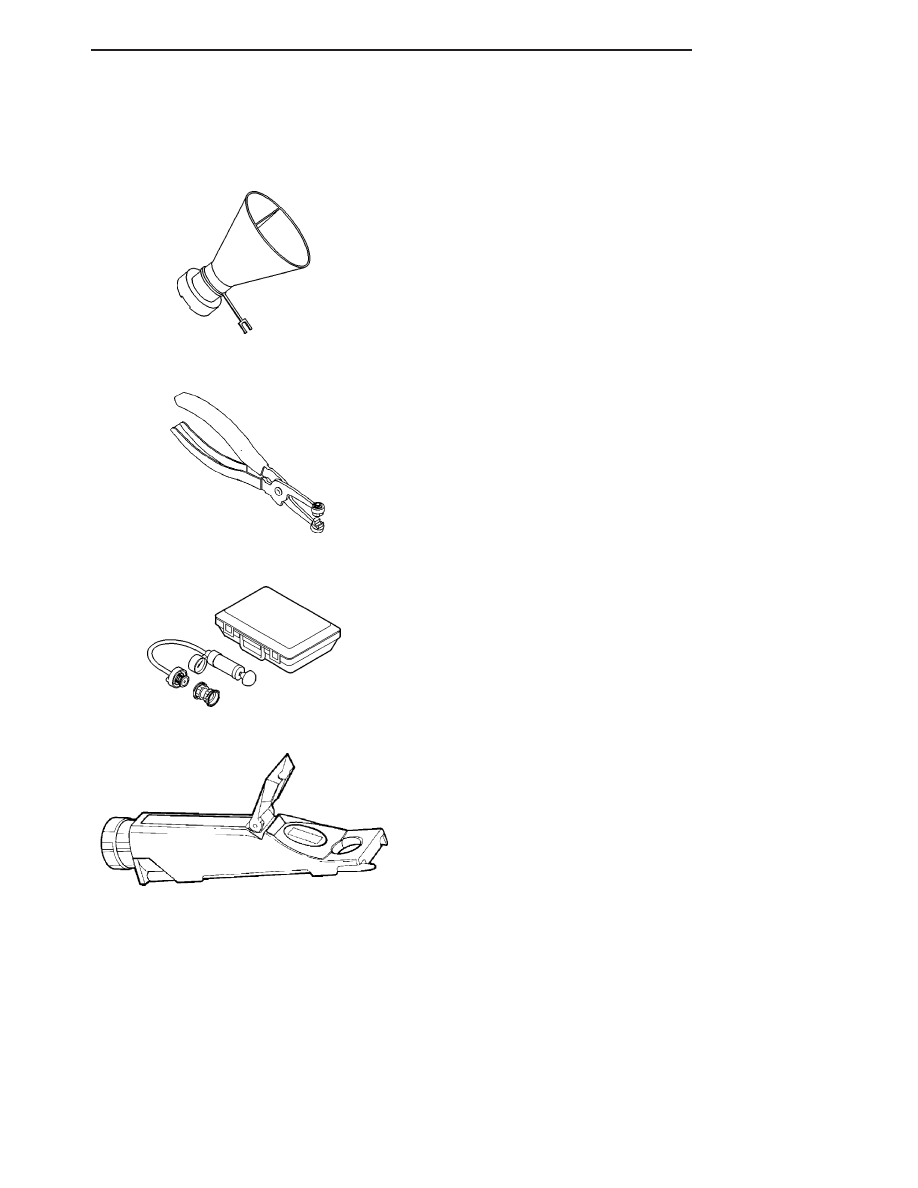Dodge Caliber. Manual - part 172

SPECIAL TOOLS
COOLING SYSTEM
Filling Aid Funnel 8195
Hose Clamp Pliers 8495
Cooling System Tester 7700
Coolant Refractometer 8286
PM
COOLING
7 - 13
|
|
|

SPECIAL TOOLS COOLING SYSTEM Filling Aid Funnel 8195 Hose Clamp Pliers 8495 Cooling System Tester 7700 Coolant Refractometer 8286 PM COOLING 7 - 13 |